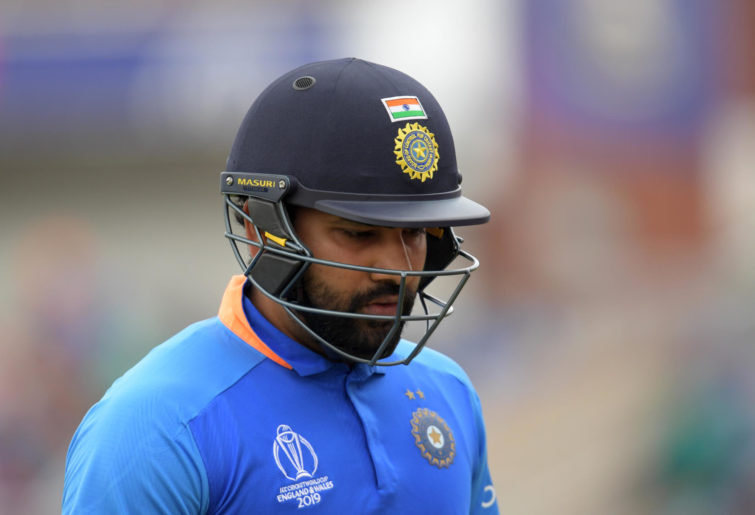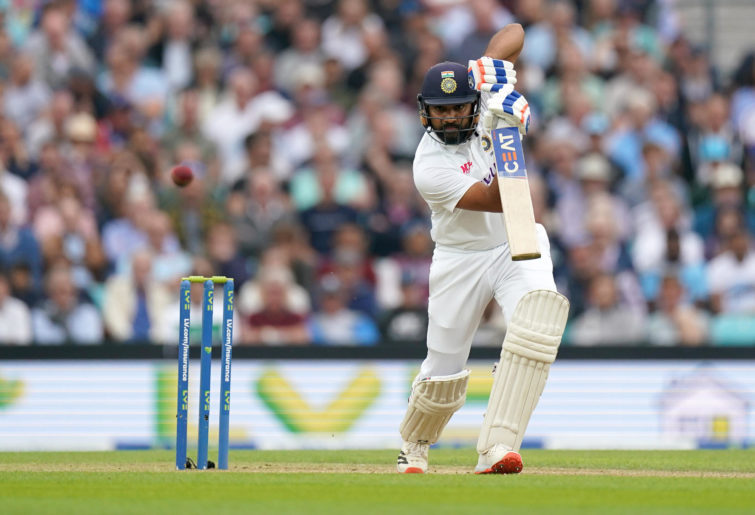The possibiliy of Jofra Archer's career coming to an early end will rob cricket of a bowler with so much talent
While a premature retirement isn’t the solution, he or England want, he may be forced into it if he can’t maintain a long run of matches.
Opinion
In February 2008, during a limited-overs series, India played their first match against Australia at the Gabba.
India had made drastic changes to their ODI team, dropping senior batsmen like Rahul Dravid and Sourav Ganguly. When the Indian batting got underway, Australian commentators like Ian Chappell were curious to see how the young Indian batsmen would shape up on the quintessential Australian pitch.
Chapell started to discuss and speculate on which new batsman, in the long term, could replace each of the ageing stalwarts in the Indian team. At the fall of Sachin Tendulkar’s wicket walked in a young man.
This young man settled down and later played a wonderful square cut off Brett Lee. At the sight of this shot, Chappell exclaimed that he had seen Sachin’s replacement. He reckoned that if an Indian batter could play so well off the back foot at Gabba against Lee, he must be the real deal.
That young man was Rohit Sharma. Over the next 12 years, this player would take us all on a roller coaster ride before fulfilling each of those words of Chappell.
In the series final in Sydney, Rohit scored a 50 alongside Sachin’s hundred to take India to victory. Soon after the series, he dazzled us all in the Indian Premier League with clean strikes using the orthodox technique. Adam Gilchrist, who was Rohit’s teammate, was effusive in praise of his ball-striking capability.
He made a place for himself in the subsequent limited-overs Indian teams. He got a chance to open the innings in the T20 World Cup in 2009. He looked destined for greatness.
Rohit got plenty of chances to establish himself in the Indian team during the 2008 to 2010 period. However, he could not make the most of his opportunities, and luck did not favour him either. A freak injury during the warm-ups spoiled his debut in the Nagpur Test against South Africa. His cup of woes brimmed when he lost his place in the Indian squad for the ODI World cup 2011.
Players like Virat Kohli managed to establish themselves in the Indian team ahead of him. Even though he was dropped due to his inadequate performances, team management seldom lost faith in his ability. MS Dhoni continued to talk up his talent, which earned him the mocking title of ‘Mr Talent’. With every failure, the taunts from the press and cricket-watching public grew.
He got another title – “No-hit Sharma”.
The first phase of his turnaround came in the 2013 Champions trophy. The Indian team allowed him to open the innings alongside the in-form Shikar Dhawan. Rohit used this opportunity to score runs and get a toe hold in the Indian team. Shikar’s red hot form provided Rohit with space to play himself in and score some valuable runs.
In the subsequent high-scoring ODI series against Australia, Rohit used the toe hold to break open the door into the Indian limited-overs team. He scored a double-hundred and a hundred in this series to showcase his big scoring capability in international limited-overs cricket. His much-anticipated Test debut was not far away.
Rohit made his Test debut against the West Indies in 2013. He scored a century on debut and announced his arrival in the Test arena. He travelled to South Africa for a two-Test series.
Post the retirement of Indian batting stalwarts during the 2012-2013 phase, this was a young Test team with places up for grabs. Rohit had a poor series in South Africa while other young players like Kohli, Murali Vijay and Ajinkya Rahane made a name for themselves. In the subsequent Test series in England, he messed up an excellent opportunity to score big runs on a flat track in Southampton, playing a reckless shot to get caught at mid-off.
This dismissal earned him the ire of the Test-watching public. His time in the Indian Test team started to run out. He played the first two Tests in Australia during the Border-Gavaskar trophy in 2014-15, but failed to make a big impression and lost his spot in the Boxing Day Test to the debutante KL Rahul.
While Rohit’s troubles in Test cricket continued, his limited-overs career grew leaps and bounds. He scored big runs for India in every series, rattling off centuries in ODIs and T20s alike.
During this time, he became the captain of the Mumbai Indians team in the IPL. However, his desire to establish himself as a Test player remained unfulfilled. The blame for his failures rested solely at his feet. Indian management made space for him in the Test team at every possible opportunity, but he could not convert those opportunities.
After some time, fans had made peace with him only appearing in white-ball cricket. In the background, however, he continued his efforts to becoming a better Test batsman.
The year 2019 proved pivotal to Sharma’s next leap forward. He had a brilliant run during the ODI World Cup and established himself as a superstar cricketer.
During this period, Virat’s form dipped from his rarefied heights and, for the first time, Rohit outshone the Indian Captain. His continued success in the IPL, winning multiple championships, added to his aura.
However, his inability to establish himself as a Test player continued to annoy him and his fans.

Rohit Sharma (Photo: Dibyangshu Sarkar/AFP via Getty Images)
Later, Murali Vijay and KL Rahul’s dips in form, coupled with Prithvi Shaw’s injury, provided a chance for Rohit to get back into the Test team as an opener. Coach Ravi Shastri took it upon himself to make Rohit Sharma a successful Test opening batsman. He worked with the coaches to tighten up his technique. In his earlier innings, he would get out playing loose drives outside the off-stump or shots across the line of the ball.
Now, he focused on playing tight and close to the body, within the box, as it were. He was unlucky to miss the Tests in New Zealand due to injury, and COVID delayed his opportunity to showcase his growth as a batter in away conditions.
After these delays, he got his chance in Sydney during the 2020-21 Border-Gavaskar series. He looked in good touch during the two Tests in Sydney and Brisbane but failed to convert his attractive 30s and 40s to a big score. He was also criticised for throwing his wicket away in some of those innings.
The story seemed to be playing to the same old script. However, management continued to stand by him. They had to wait only a few more months to see their faith being repaid.
The five-Test series in England in 2021 was the big occasion where the team badly wanted him to succeed. Kohli’s lack of form and the Indian middle order’s weakness in English conditions meant that the openers had to score runs to help the team be competitive. Rohit, along with Rahul, took on the mantle and made important runs at the top of the order.
In each innings, Rohit looked the most assured batsman at the crease. However, his innings felt like unfinished business, particularly when he got out caught in the boundary.
With every passing innings in the series, the big one seemed elusive, and the familiar script continued to play itself. Finally, everything seemed to boil over on the second evening in the Oval Test.

(Photo by Adam Davy/PA Images via Getty Images)
India faced a 99-run deficit, and the series looked like it was getting away. They had to score big runs in the second innings to stay afloat in the Test and the series. With most other batsmen out of form, India looked up to Rohit to make his innings count.
The pitch had also eased out, making batting less arduous than the first innings. From a batting process perspective, Rohit did nothing different in this innings as well. He played close to his body and focused on keeping the ball down.
The English bowlers found little success outside the off-stump line and soon gave him scoring opportunities down the ground and in the leg side. He drove straight in the ‘V’ and kept his pull shots along the ground.
The fact that Cheteshwar Pujara had a strike rate higher than him during the first part of their partnership showed the self-control. Once he got to about 60 runs, he cut loose against the spin bowling of Moeen Ali.
From this point, that elusive hundred on foreign shores was only a question of time. The six he hit to get to his hundred was the display of a batsman who was in control of his fate.
Rohit tamed his fate, a fate that had foxed him with multiple googlies in the past. Rohit finally became the batsman we all thought he could be way back in 2008. A promise was fulfilled.